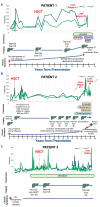Hepatocyte senescence and persistent liver injury in Fanconi anemia
- PMID: 40045901
- PMCID: PMC12358771
- DOI: 10.3324/haematol.2024.287096
Hepatocyte senescence and persistent liver injury in Fanconi anemia
Figures


References
-
- Mehta PA, Ebens C. Fanconi Anemia. In: Adam MP, Feldman J, Mirzaa GM, Pagon RA, Wallace SE, Amemiya A, eds. GeneReviews((R)). Seattle (WA); 1993. - PubMed
-
- Gluckman E, Devergie A, Schaison G, et al. Bone marrow transplantation in Fanconi anaemia. Br J Haematol. 1980;45(4):557-564. - PubMed
-
- Masserot-Lureau C, Adoui N, Degos F, et al. Incidence of liver abnormalities in Fanconi anemia patients. Am J Hematol. 2012;87(5):547-549. - PubMed
LinkOut - more resources
Full Text Sources

